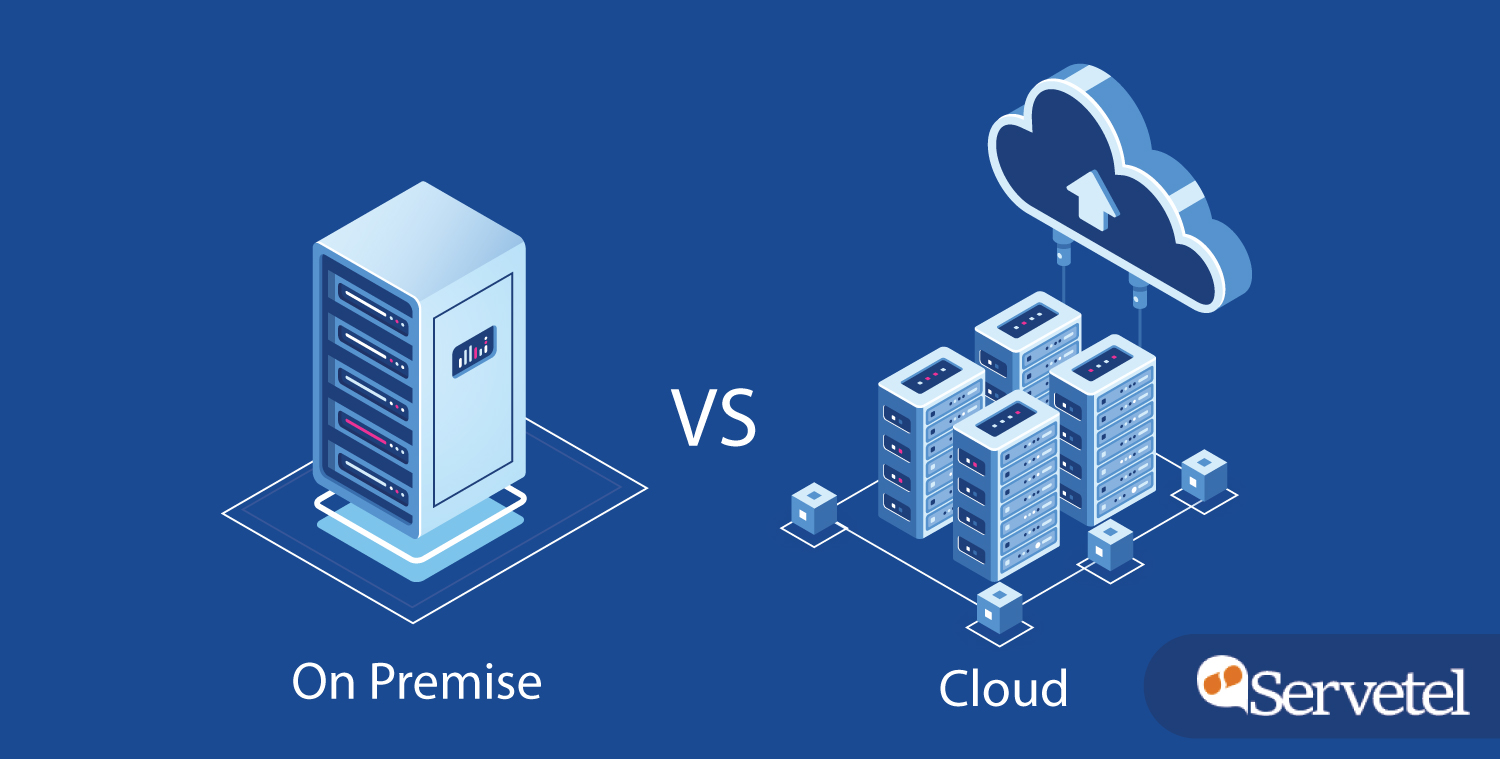One of the biggest dilemmas that companies face while setting up a new business revolves around the choice of a communication system. They can choose an on-premise or cloud telephony system to facilitate communication.
Yet, few companies in the market are still evaluating the pros & cons of both the communication platforms.
In this blog, we will help you understand the basic difference between both the systems on some key business parameters.
Deployment
On-premise telephony system is installed locally on the company’s premises which involves bulky hardware. Moreover, to install the hardware a company needs to buy additional and dedicated space.
Whereas, in cloud-based telephony system is hosted on the vendor’s data center and accessed through a web portal. A company doesn’t need to buy dedicated space or infrastructure in order to get started with their telephony system.
Billing
On-premise systems usually come with monthly or annual subscriptions and licensing is quite complicated. It involves additional costs required for functionality upgrades including software and database updates.
Cloud-based systems come up with pay-as-you-use billing. It also enables you to pay by following per user or month billing structure which helps in saving your resources as well as capital. You are charged for whatever services you use, and no extra charges are billed.
Data Security
In on-premise, all the data is handled by the organisation itself. The data needs to be managed manually by data security managers or other assigned team. Moreover, your security team needs to be updated with potential security threats to handle them preemptively.
The data is safe in cloud-based systems as all the data is managed by the cloud service provider who is well equipped to handle any security threats. The information is stored at the vendor’s data center and operated by an extremely professional team making it secure and mobile.
| ON PREMISE | CLOUD TELEPHONY | |
| DEPLOYMENT | Installed locally on the company’s premises | Hosted on vendor’s data center |
| BILLING | Monthly or annual subscriptions | Pay-as-you-use |
| DATA SECURITY | Risky and handled by the organisation | Safe and managed by the vendor |
| INVESTMENT | Risky upfront investment | Cheap upfront investment |
| SCALABILITY | Scaling is tedious | Easily scalable as per the demand |
| UPDATES | Manual updating and time consuming | Automatically updated by the service provider |
| DISASTER RECOVERY | No disaster recovery provision | Replica of data is stored at another data center |
Investment
On-premise systems demand high upfront investments. Building a telephony system on your premises would incur a lot of initial sets up costs, so the capital investment needs to be strong. These fixed costs are considered a capital expenditure.
Conversely, cloud-based systems require a minimal upfront investment. They involve an operating expenditure which involves an overhead cost which the enterprise will continue to pay as long as they are using the services.
Scalability
On-premise systems have several limits in terms of scalability. After a threshold, these systems reach a limit which demands the replacement of the existing system to a larger one capable of handling more calls.
Cloud telephony systems are easily scalable with a small hike in the monthly costs. When there comes a requirement to add more calling channels, the cloud telephony system is robust enough to add new channels without much hassle. It also allows you to scale down the usage of systems as per your demand which again saves a lot of capital.
Updates
Updating on-premise systems are by no means a straight process. You need to update the software and relevant databases in your system. It requires manual updating and is a time-consuming process. You may need to update several times which may take days.
Updating cloud telephony systems is the responsibility of the vendor. The updates are maintained by the cloud service provider and are automatically updated with the latest version so that the software is always up to date.
Disaster Recovery
One of the most crucial aspects of on-premise system relates to disaster recovery management. There is no provision for disaster recovery in on-premise systems as the data is only stored at the company’s premises. If any natural calamity hits the on-premise center, all the data gets destroyed and could never be recovered until you have a backup in place.
On the contrary, in cloud telephony data is hosted on the vendor’s data center and a replica of information at the specific data center is also deployed in the same or nearby cities. Thus, the information can be fetched from another data center in case of disaster.
By now, you must be aware of reasons why cloud telephony is the best solution for your business. If you are still in a dilemma about which telephony system you should choose for your business, give Servetel a call at 1800-120-4132 to address your concerns.

















